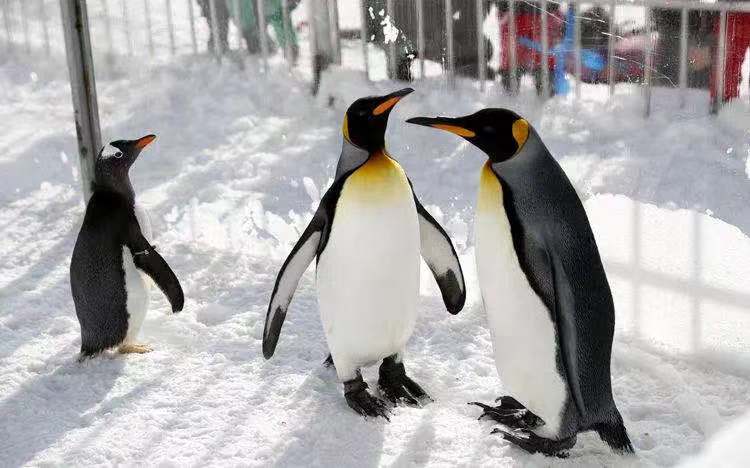According to media reports, the Bernardo Oykins Riquelme base in Antarctica in Chile has experienced the novel coronavirus, and 36 people have tested positive for the novel coronavirus. Of the 36, 26 are active Army personnel and 10 are civilians responsible for the maintenance of the base.
Recently, they showed symptoms of COVID-19 during their duties at the base. The military rotated personnel in time and completely cleaned and killed the base.
The most prominent characteristics of Antarctica are: cold, few people, more penguins. The novel coronavirus “run” to the Antarctic is really unexpected by many people.
Thousands of precautions, but still failed to prevent the spread of the novel coronavirus to Antarctica.
The presence of the presence of the presence in Antarctica was linked to the Chilean ship Sagento Aldea, which visited the base between 27 November and 10 December.
Since then, the ship Sagento Aldea has discovered the epidemic, and three of the 208 crew members have been diagnosed and quarantined.
The “Coronavirus in Antarctica” now mentioned is only that people have landed in Antarctica as carriers of the virus.
The next step is to confirm whether when people bring the novel coronavirus to the Antarctic, they will make Antarctic wildlife infected with the novel coronavirus.
Some researchers proposed that nucleic acid testing should be carried out on Antarctic penguins, seals and other animals to see if they are infected with the novel coronavirus, and disinfect the wild environment, such as disinfectant, high temperature or ultraviolet disinfection, or burning articles that may be contaminated by the virus.
However, Antarctic research staff believe that the environment can be disinfected in the station area and base, but it is impossible to disinfect the wild environment.
This means that if someone at the base involved has contracted the novel coronavirus and has worked and stayed in an environment outside the base, it is possible to release the novel coronavirus into the environment.
Antarctica has low temperatures and a strong ability to survive. If the virus is frozen under the Antarctic ice sheet, it is likely to be released many years later to threaten human beings and drift to the rest of the world with the melting icebergs.
But all this is only a corollary at present, but the novel coronavirus will spread to many corners of the world with the footprint of human activities, which is a high probability event.
Although Antarctica is a rare place to be traveled, scientific research activities for Antarctica have not been terminated by the spread of the epidemic.
An important reason is to monitor global climate change. Considering the preservation of a pure land for the whole world, in August, the Council of Directors of the National Antarctic Directors (COMNAP) proposed to significantly reduce the study and scientific research of scientists from various countries to Antarctica.
Many projects such as international cooperation, experiments and field trips have been cancelled, and other projects have been allowed only allowed to carry out basic work. and data collection.
Among them, Australia and Germany plan to cut their researchers by 50%, and New Zealand will cut by 66%. And when the scientists arrive in Antarctica, they will be tested for the novel coronavirus and social distancing.
Reducing scientific research on Antarctica will indeed affect many scientific research projects, especially the acquisition of scientific evidence of global warming, such as monitoring melting ice sheets and warming oceans and making monitoring results and data available to countries and the United Nations, as a basis for climate policy formulation, taking into account the current prevention of COVID-19 from entering the Antarctic environment.
Such as ice is a more important choice under the spread of the epidemic.
Now, unfortunately, the novel coronavirus has been brought to Chile’s base in Antarctica by human beings, and may expand to the whole Antarctic in the future.
The spread of disease from human to environment is an inevitable cycle.
The spread of COVID-19 to Antarctica has also given new meaning to old topics such as the relationship between man and nature.
If the relationship between man and society can be regarded as a major relationship between human existence, then the relationship between man and nature is another major relationship.
It is not appropriate to use the seventh ron after the ranking of human-to-human relationship to show the relationship between man and nature. Previously, sociologists used to use the relationship between people and family, relatives and friends, and strangers. Waiting for one column by one, only in the end can the relationship between man and nature be counted, which is the seventh.
But the relationship between man and nature is no less than that between people.
The former also contains many sub-items, such as the relationship between man and animal, man and plant, man and water, and man and man and the natural environment. If we unify the relationship between man and nature, we need to understand why the novel coronavirus spread from person to person to the South Pole today.
The coronavirus may have spread from animals to people at first, but it is not conclusive about what animal it is.
Maybe it may be bats, pangolins, or birds.
A disease is an inevitable cycle from animals to people, and then from humans to animals, and releases pathogens to the environment. For example, the novel coronavirus goes from animals to people, from people to animals (mink), and from people to the environment.
For example, the virus was brought to the Antarctic by humans. But as a human being, at least this cycle can be reduced.
It is necessary to reduce and avoid this cycle, that is, to reduce and avoid the occurrence of zoonotic diseases.
From the perspective of the relationship between man and nature, this requires reducing the hunting and contact with wild animals, respecting and living in peace with wildlife, at least not excessively disturbing the habitats of animals and plants such as Antarctica, and allowing the earth to retain an extra pure land.



